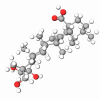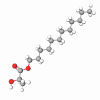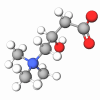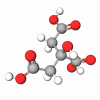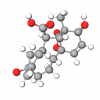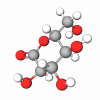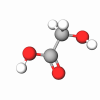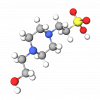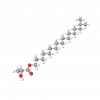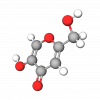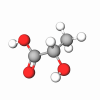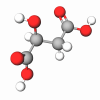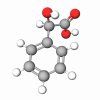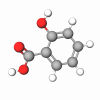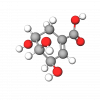Hydroxy acids
Alpha, Beta, and Poly-Hydroxy acids (AHAs, BHAs, and PHAs) are here to transform your skin. They make skin look younger, smoother, and more radiant. So, what are these miraculous ingredients? How do they work? And what are their benefits for the skin? Let's dig deeper.
AHAs are exfoliating and hydrating agents derived from natural products such as milk (lactic acid), citrus fruits (citric acid), sugar (glycolic acid), pears, and apples (malic acid). These acidic compounds gently "dissolve" dead skin cells on the skin's surface and remove dermal debris. This process is called exfoliation. It is recommended to include exfoliators in the weekly skincare routine and use them at least twice a week if you have oily or acne-prone skin.
In lesser concentrations, AHAs showcase water-binding ability. They combat skin dryness, one of the striking manifestations of aging skin.
BHAs are oil-soluble exfoliators. The most prominent BHA is Salicylic acid. It dissolves in human sebum very well, so it permeates skin pores and purifies them from within. It also demonstrates anti-inflammatory and antibacterial properties. The combination of these qualities makes Salicylic acid the ingredient of choice for treating skin imperfections like acne, black, and whiteheads.
Application of AHAs and BHAs substantially changes skin appearance. They visibly lessen fine lines and wrinkles, brighten the skin tone and give it a healthy shine.
Gibberellic Acid is an organic heterocyclic hydroxy acid that is a growth factor in plants and fungi. It acts as a hormonal growth regulator, stimulating and regulating plant development.
Isostearyl Lactate is an oil-soluble, liquid ester. It is a clear yellow liquid that is especially lubricious and silky to the touch. It is miscible with natural and mineral oils and volatile silicones, dispersible with propylene glycol, and insoluble in water and ethanol.
Kojic acid is a hydroxy acid with the chemical name 5-hydroxy-2-hydroxymethyl-4-pyrone. It is produced by several species of fungi, especially Aspergillus oryzae, which Japanese common name is "koji".
Lactobionic acid is a polyhydroxy acid (PHA) that can be produced from lactose (a disaccharide with glucose and galactose units), where the glucose unit is oxidated into gluconic acid.
LPD Kojic Acid is a liposome complex that encapsulates kojic acid. Such active is made from several different types of fungi.
Shikimic Acid is a natural polyhydroxy acid (PHA) obtained from Japanese star anise (Illicium Verum; also called Shikimi). It is a multifunctional active ingredient that promotes cell renewal and exhibits antioxidant and antimicrobial activities.

